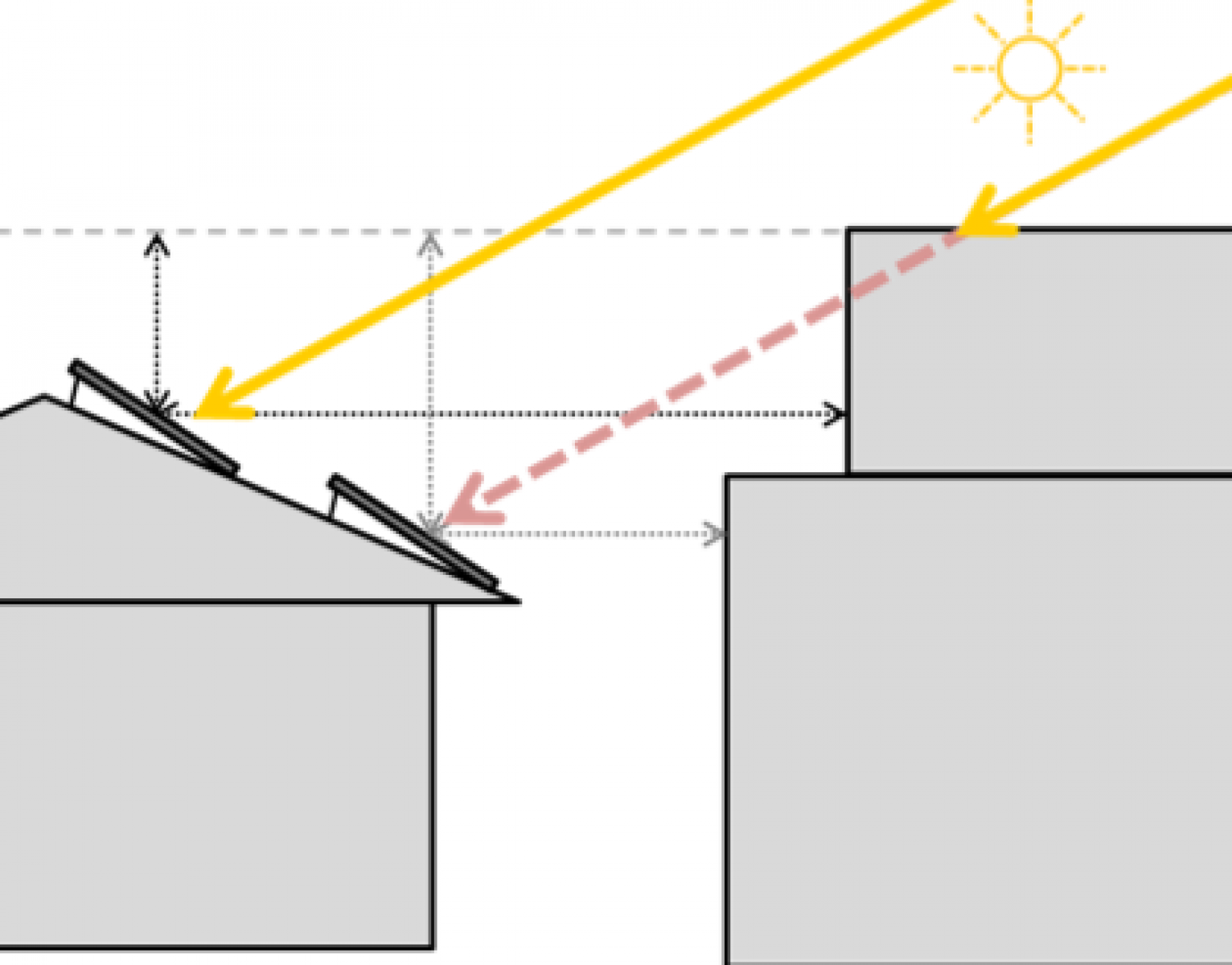On this page:
New to practice notes?
Planning practice notes give technical advice about the planning system, each dealing with separate aspects of the system.
This practice note provides advice about planning permit applications for development that may overshadow an existing domestic rooftop solar energy system.
What is a domestic rooftop solar energy system?
A domestic rooftop solar energy system is a structure associated with a dwelling that uses solar energy to reduce the energy requirements of the dwelling.
It may be used to generate electricity for general usage or be part of a specific appliance such as a solar hot water heating system.
It does not include a skylight, pool cover or greenhouse.
Planning for existing domestic rooftop solar energy systems
Domestic rooftop solar energy systems make an important contribution to improving energy efficiency of dwellings through greater use of renewable energy and reduced reliance on fossil fuels. They also play a role in Victoria meeting state renewable energy targets.
To help protect this energy source, the planning scheme requires consideration of the impact of a development on an existing domestic rooftop solar energy system in certain areas.
The requirements
The planning requirements only apply if the existing domestic rooftop solar energy system is connected to the roof of a dwelling, including the roof of any outbuilding associated with the dwelling.
The requirements apply to all buildings and works that require a planning permit in a residential zone* or Commercial 1 Zone if an adjoining lot in a residential zone contains an existing domestic rooftop solar energy system.
In this practice note ‘residential zone’ means the General Residential Zone, Mixed Use Zone, Neighbourhood Residential Zone, Residential Growth Zone and Township Zone. It does not include the Low Density Residential Zone.
The solar energy system must exist at the date of the planning application being made on an adjoining lot.
Application considerations
Making an application
A planning permit application should include the following information:
- The location of any existing domestic rooftop solar energy system on a dwelling on an adjoining lot and the extent of any existing overshadowing.
- Shadow diagrams that illustrate the extent of overshadowing created by the building and works on any existing domestic rooftop solar energy system.
- A written statement outlining how overshadowing of any existing domestic rooftop solar energy system is proposed to be mitigated.
Assessing an application
When assessing the overshadowing of an existing domestic rooftop solar energy system, the responsible authority must consider:
- The extent to which it is already overshadowed.
- Whether it is appropriately located.
- The effect of overshadowing from the proposed development.
Relevant factors to consider in determining whether the impact of a development is unreasonable include:
- The extent of existing overshadowing of the domestic rooftop solar energy system from existing buildings or permanent structures.
- Whether the proposed development meets the side and rear setback and north-facing windows standards under clauses 54 and 55.
- Whether the protection of the existing domestic rooftop solar energy system will unreasonably constrain or compromise the proposed development.
- The type of existing domestic rooftop solar energy system. A multiple string system is less affected by shading than a single string, which is more vulnerable to shading. Other system features such as micro inverters or bypass diodes can also operate with partial shading.
- Whether the siting of the existing domestic rooftop solar energy system takes into account the potential future development of adjoining lots promoted or permitted under the planning scheme.
- The extent to which the existing domestic rooftop solar energy system has been located to protect it from overshadowing through placement higher on the roof and further from existing lot boundaries. See diagrams overleaf for recommended placement.
Rooftop solar energy facility placement
Height
Locating panels higher on the roof minimises the likelihood of overshadowing by:
- Increasing the separation between the panels and any neighbouring development.
- Reducing the chance that any neighbouring development will extend higher above the panels.



Setback
Setting the panels as far back from the lot boundary as possible (either by placing them on roof panes with a greater setback or further back on the roof) will increase the distance between the panels and any potential source of neighbouring overshadowing.

People seeking to install a domestic rooftop solar energy system on their dwelling are encouraged to apply the above placement strategies. The above placement will help protect a domestic rooftop solar energy system from potential overshadowing in the event that an adjoining lot is developed in the future.
Disclaimer
This publication may be of assistance to you but the State of Victoria and its employees do not guarantee that the publication is without flaw of any kind or is wholly appropriate for your particular purposes and therefore disclaims all liability for any error, loss or other consequence which may arise from you relying on any information in this publication.
Page last updated: 01/08/24